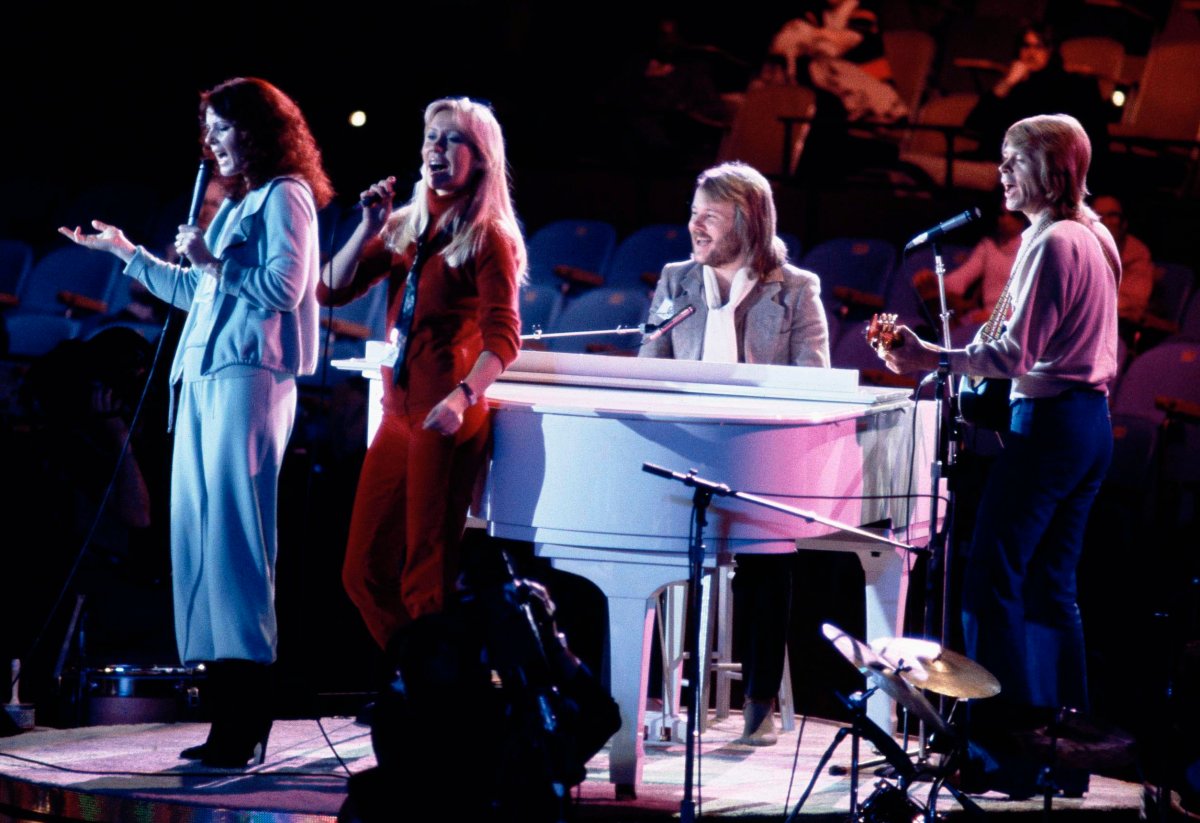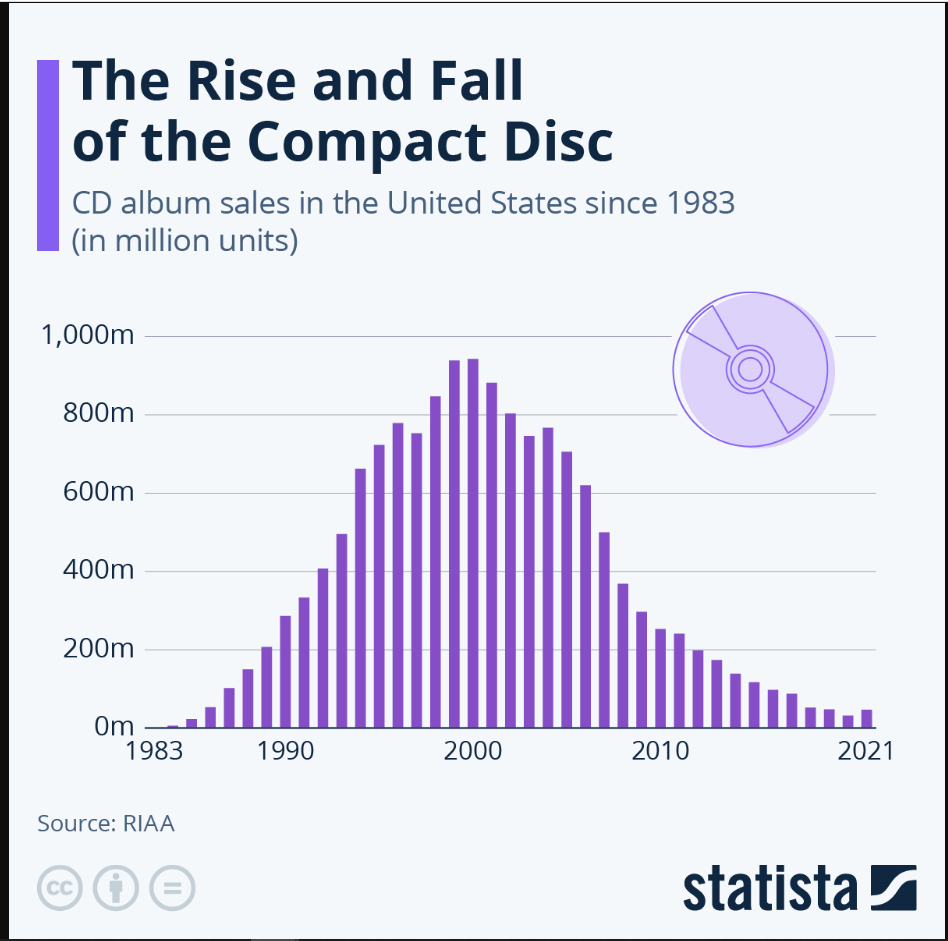After more than a decade of work, building on an idea first posited in 1931 for a device known as the “optophone,” Sony of Japan and Philips of The Netherlands, finally arrived at a new music storage and format they called the “compact disc.”

On Aug. 17, 1982, the first store-bound CD was manufactured at the Philips plant in Germany. It was one of only two such facilities on the planet, the other being in Japan and run by co-developer Sony. History records that this first commercially available CD was The Visitors, which had been released by ABBA a year earlier. Other discs may have been produced that same day, but this one was the first off the line.
Okay, if we’re going to get pedantic about things, the very first CD was a test pressing of Richard Strauss’s Eine Alpensinfonie featuring recordings by the Berlin Philharmonic in December 1980, but it was used in the lab and for demonstrations.
The first commercially produced CD was a 1979 recording of Chopin waltzes by Claudio Arrau that came out in very limited numbers on Aug. 17, 1982, just as the ABBA disc was being manufactured. And a CD version of the Bee Gees’ Living Eyes was shown off on the BBC Show Tomorrow’s World in 1981. Note all the different prototype CD players in this clip, which appears to have been the first public demonstration of the technology.
More releases followed — 50 in total — which all came in Japan on Oct. 1, 1982, the very same day Sony started selling the CDP-101, the first-ever consumer CD player, which sold for about US$750, the equivalent of almost $3,000 Canadian today. The discs themselves started at US$15 (almost C$60 today) and went beyond US$20 (C$78 in today’s money).
Some of those OG releases were 52nd Street by Billy Joel, Pink Floyd’s Wish You Were Here, Turn Back and IV from Toto, Journey’s Escape, and Off the Wall from Michael Jackson along with a ton of classical recordings, all carefully picked for the audiophiles Sony and Philips expected to be early adopters of the new technology.
North America and Europe got their first CD players on March 14, 1983, with CBS leading the way with 16 titles.
Technically minded music fans were immediately besotted with these things, amazed at the excellent digital sound compared to the crappy audio offered by the vinyl of the era, most of which featured thin pressings made of recycled polyvinyl chloride, which imparted all kinds of nasty distortion and noise. “Perfect sounds forever” was what we were told. This is from the New York Times.

Get daily National news
“The digital compact disk and player, which is making its debut in retail stores this month, is being likened in the music industry to the advent of stereophonic sound or the long-playing recording,” the Times wrote. “Still, the CD’s effect on record makers, manufacturers of audio equipment and — most important — the music-loving consumer will probably be more gradual than were the two previous revolutions, according to analysts.”
“The technological leap is indeed radical,” the NY Times continued. “Compact discs are 4 3/4 inches in diameter as opposed to conventional 12-inch long-playing records, and approximately the same thickness. CDs are made principally of clear plastic and aluminum. They are played on one side, yet yield up to 60 minutes of playing time.”
The compact disc would bring waves of prosperity to both the recording industry and artists and people scrambled to replace their vinyl, cassettes, and 8-tracks with CDs. Record stores, however, were not so happy — at least at first. The entire industry was suffering through a brutal recession and a bad hangover from the disco years, both of which contributed to year-over-year sales declines for the first time since the Great Depression.
Record store owners were not keen on spending money on display shelving for yet another format, especially during hard times. Only 75 stores across the U.S. bothered the stock the things at first.
A solution was the longbox, a wasteful sort of packaging that allowed two CDs to be stacked side-by-side in an existing 12-inch rack made for LPs. Half the package contained the CD while the other was just empty space. Retailers also believed that this would cut down on shoplifting, too. (There was a period where cassettes had their own version of the longbox for that very reason.)
The longbox got worse, too. Some CDs were fused into longboxes made out of hard transparent plastic that required industrial shears to open. I nearly lost several fingers back in the day trying to get at a new purchase. Fortunately, the environmental recklessness of this was rejected by music fans with Canadians leading the way. We were the first nation to eliminate them.
Consumer adoption was a little slower than the industry expected (a million players between 1983-84 along with 22.5 million CDs), largely because of the high costs of players and discs along with a less-than-stellar selection of albums. Things began to improve in 1984 when Sony converted a record plant in Terre Haute, Ind., to CD manufacturing. The first disc off that line? Born in the USA from Bruce Springsteen.
Then came Dire Straits’ Brothers in Arms in 1985, an immaculately engineered and recorded album that stereo shops began to use as a demo disc for customers (and still use today, actually). That album sounded so good on CD that people began to fork out for players.
But arguably the most development came on Feb. 26, 1987, when four Beatles albums were made available on compact disc for the first time. When these records finally began appearing on CD — Please Please Me, With The Beatles, A Hard Day’s Night, and Beatles for Sale — many saw this as the Beatles blessing the new technology and then dove in.
People went bonkers. Cassette sales, which had boomed with the arrival of the Sony Walkman in 1979, cratered, especially after automobile manufacturers and after-market stereo companies started offering CD players. The 1984 Mercedes S-Class was the first car to come with a factory in-dash player. Vinyl hung on for a while longer, but by the end of the 1990s was reduced to a niche market, kept alive by a dwindling number of old-school music fans and turntablist-minded DJs.
CDs, meanwhile, led to money flowing like water in the music industry — at least until the internet, MP3s, and file-sharing came along. And then, well…
But all is not lost. If you look at the above chart, you’ll see that there was an uptick in sales in 2021 in America, something that we also saw in Canada and the U.K. After being out of fashion for so long, the CD is seeing a modest revival, probably because vinyl has become ridiculously expensive.
Forty years is a long time for any technology to survive. The CD did its job for decades and still has some life. Happy 40th.
—
Alan Cross is a broadcaster with Q107 and 102.1 the Edge and a commentator for Global News.
Subscribe to Alan’s Ongoing History of New Music Podcast now on Apple Podcast or Google Play












Comments